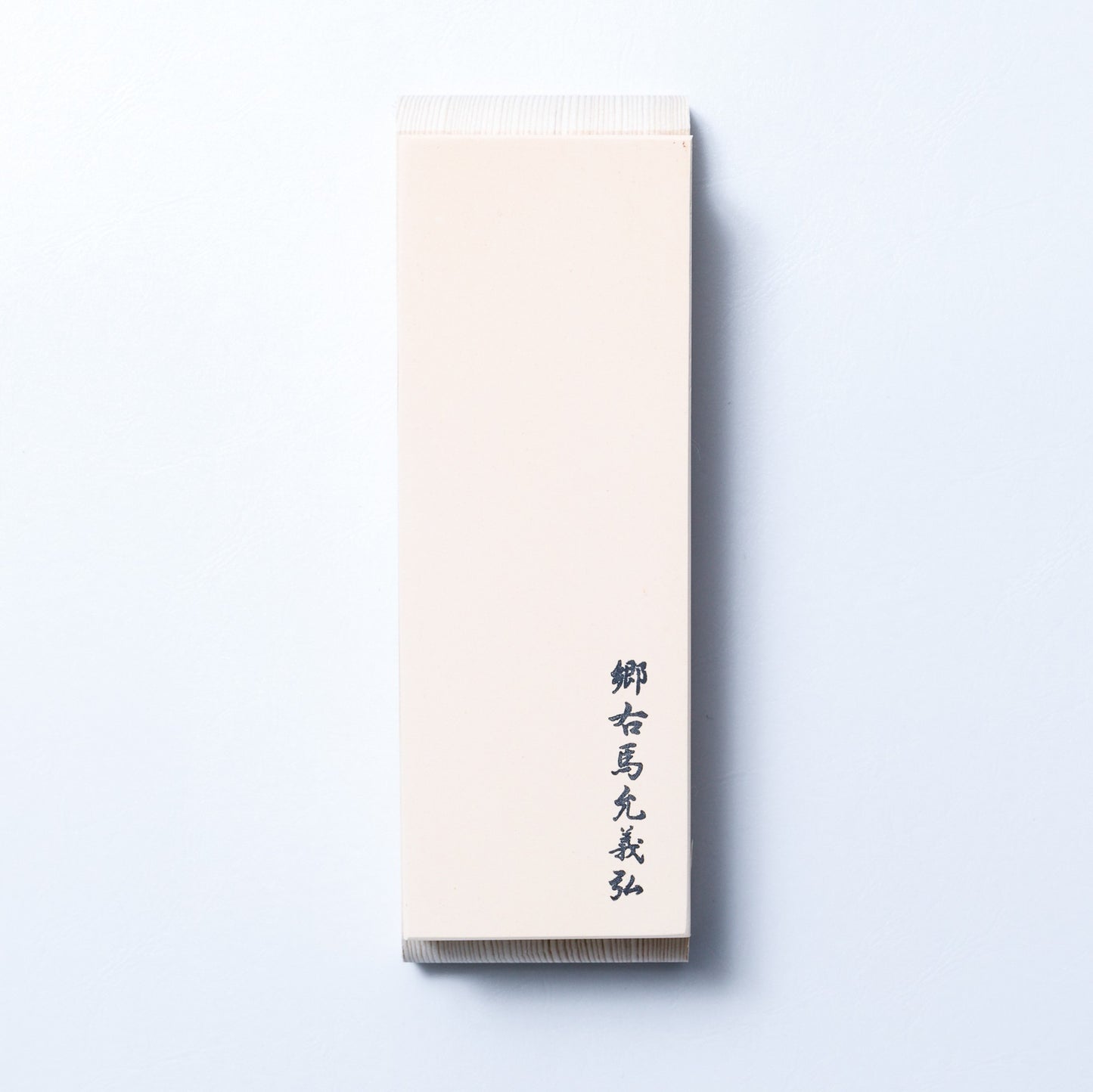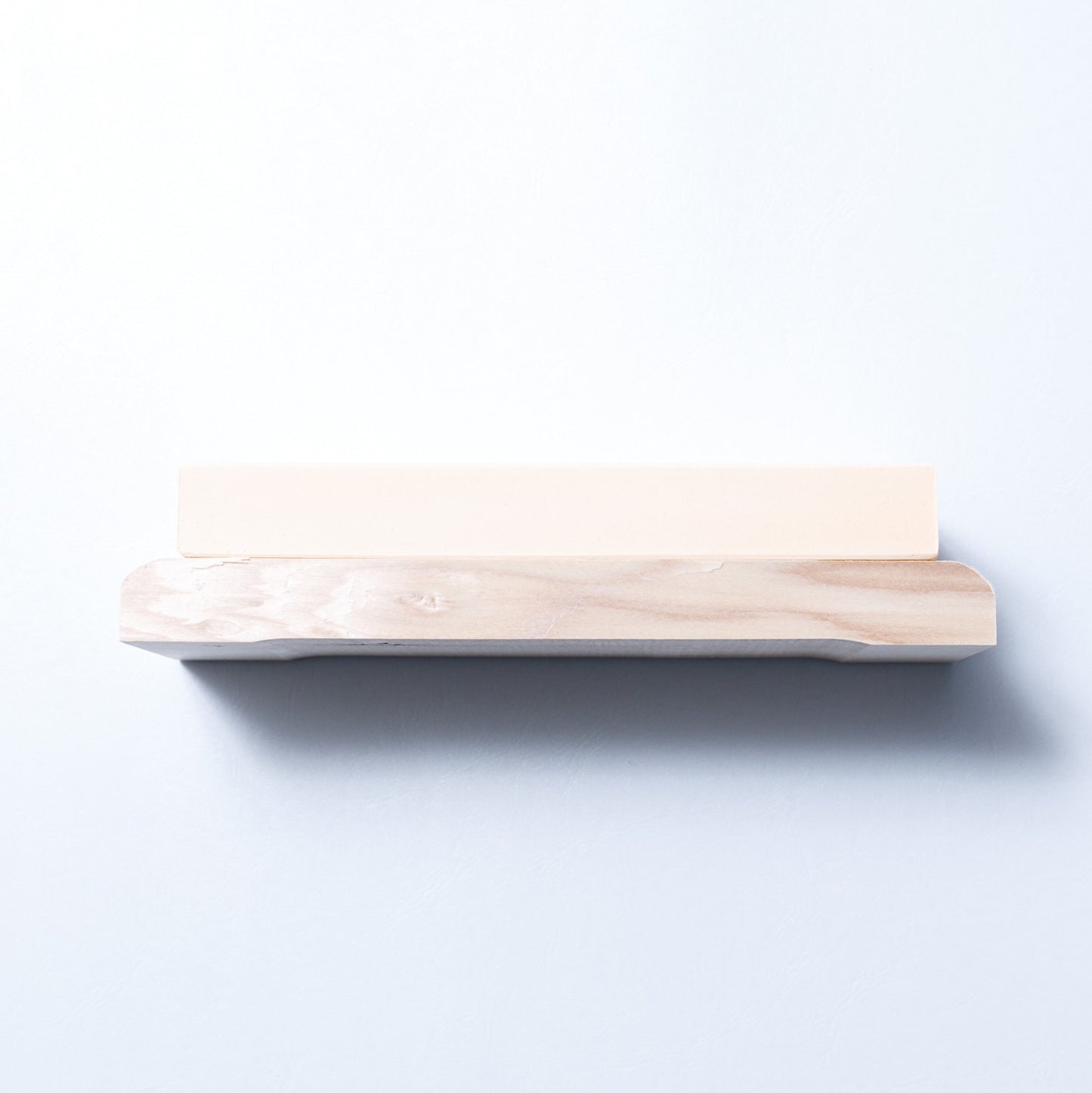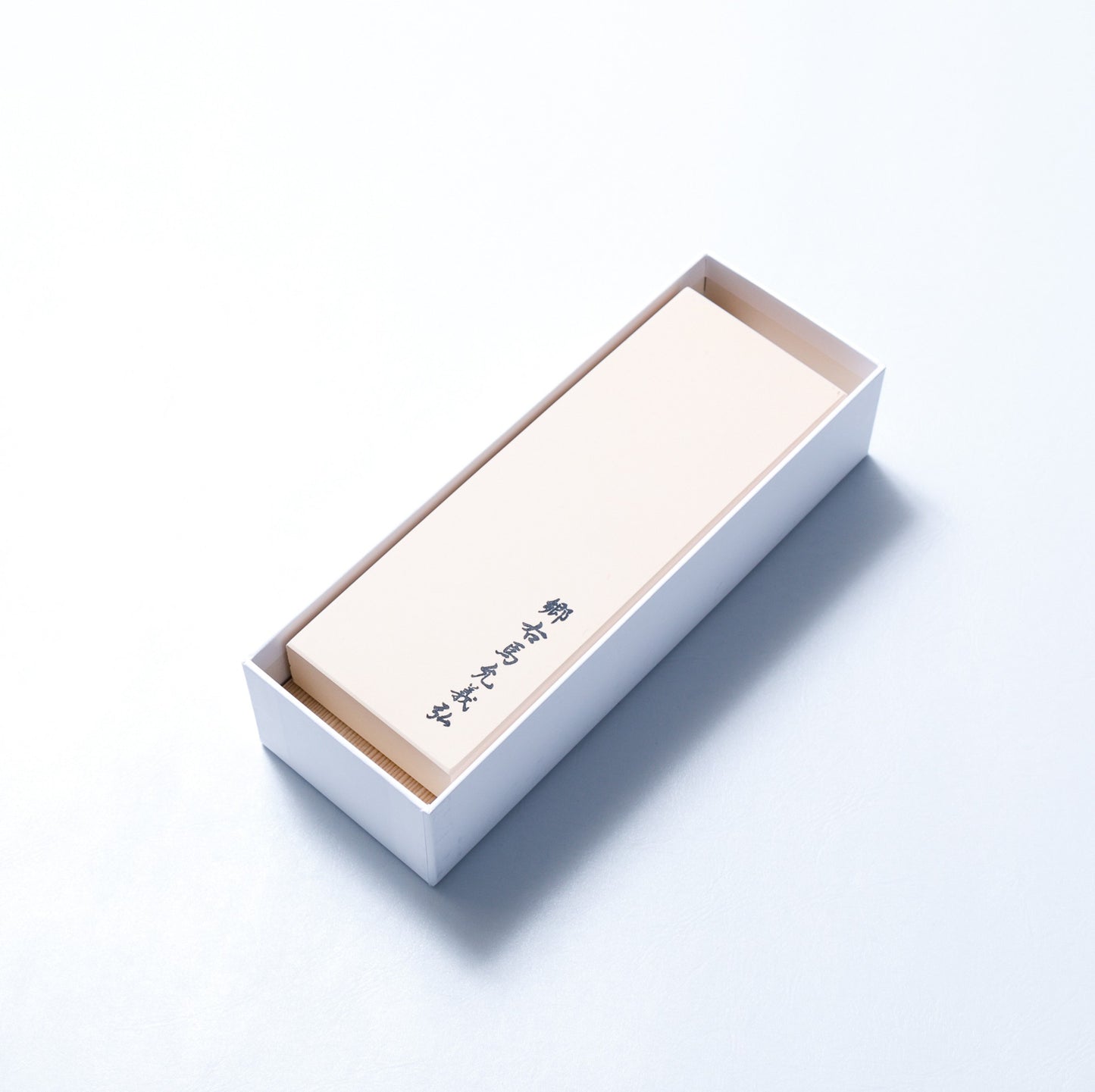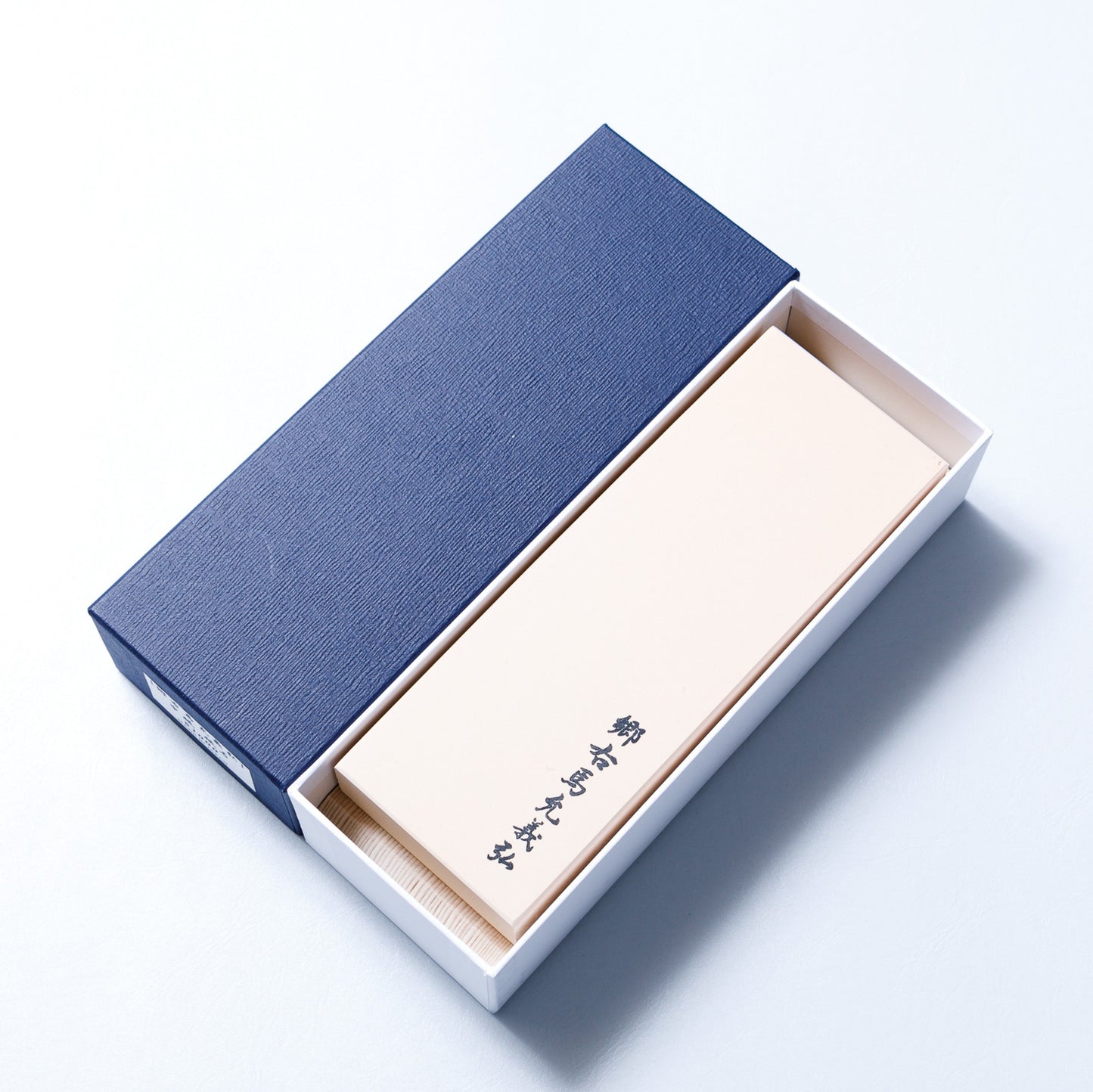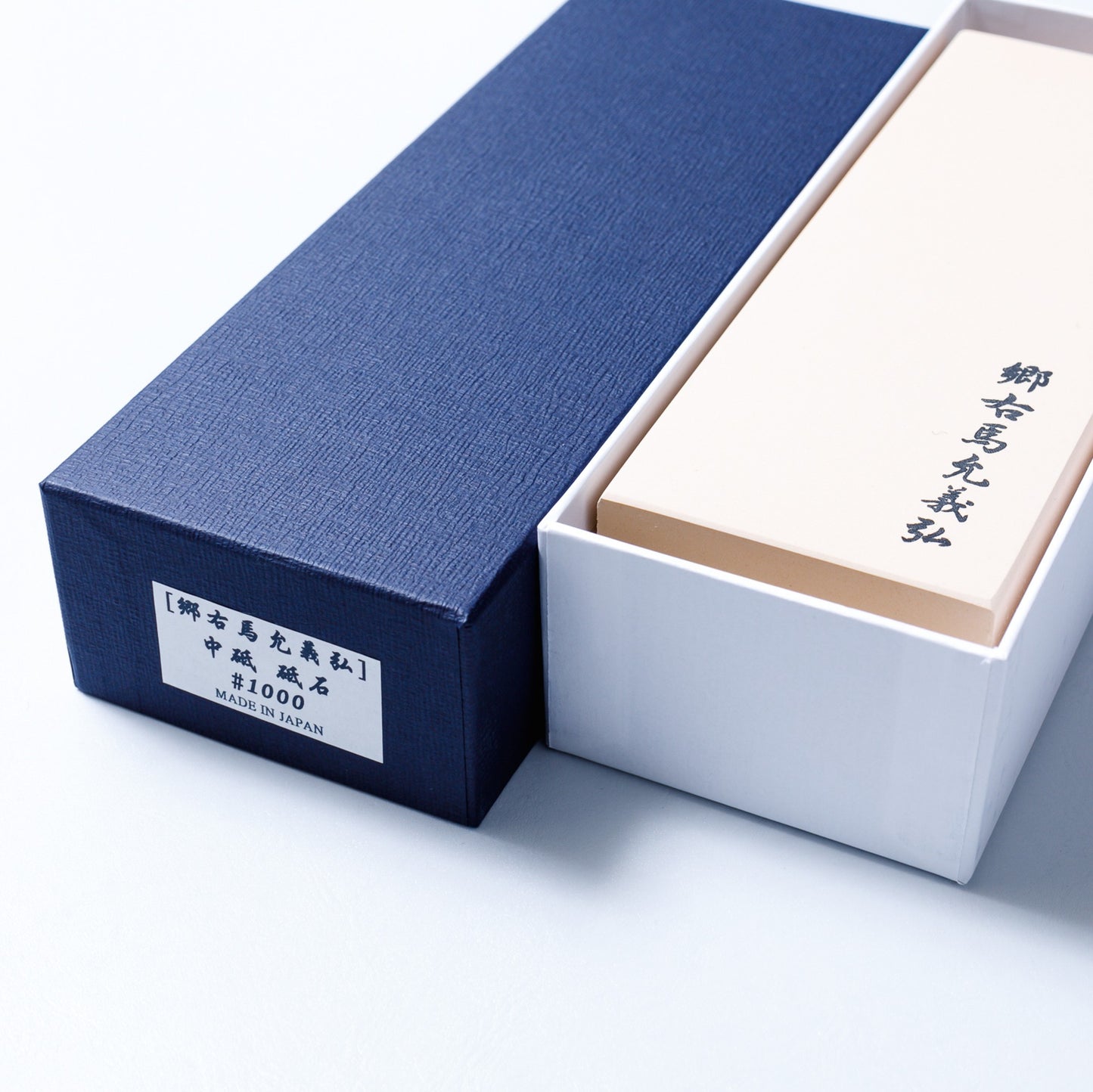Whetstone No. 1000 / No. 3000 / No. 8000
- Regular price
- ¥7,500
- Regular price
-
- Sale price
- ¥7,500
- Unit price
- per
Couldn't load pickup availability
Share
This product is made by the knife shop in Sakai, Osaka, which is responsible for the blade of the Ai knife.
This whetstone is named after Gouma Masaru Yoshihiro.
The ceramic manufacturing method increases the grinding power compared to conventional products.
It is especially effective for sharpening stainless steel materials such as V-gold No. 1 and No. 10.
In addition, we can also handle highly hard steel knives that were difficult to sharpen with conventional whetstones.
You can quickly and satisfactorily set the blade.
It is not too hard and has a smooth sharpening taste.
Since it is baked and hardened using the ceramic manufacturing method, the material remains unchanged like pottery.
It can be used for a long period with stable quality.
*With wooden base* Particle size 1000 / 3000 / 8000
*Length 24cm x Width 8cm x Height 5cm
* Weight: approx. 980g
********************************
<< How to choose a whetstone >>
Before choosing a whetstone, take a look at the material and condition of the blade you want to sharpen.
This is because there is an optimal whetstone depending on the material of the knife.
If it is a general knife on the market, is it printed on the knife?
It is written on the package at the time of purchase.
If you are unsure, please check the manufacturer's website.
Many knives are made of steel or stainless steel, and the hardness of the knife varies depending on the metal content, but all of these knives can be sharpened using a whetstone.
Please note that all of the Ai knife lineup can be sharpened with a whetstone.
(The material you should be careful about is knives made of hard materials such as ceramic.
Please note that ceramic knives can only be sharpened with a diamond whetstone, which is made of hard diamond particles. )
Grain size is a numerical representation of the roughness of the surface of a whetstone.
"#1000" or "#3000" written on the whetstone package indicates the grain size.
The smaller the number, the coarser the particle size, and the larger the number, the finer the particle size.
The reason whetstones come in various grain sizes is because it is more efficient to use different ones depending on the condition of the knife.
Those with a small grain size are called ``coarse whetstones,'' those with intermediate grain sizes are called ``medium whetstones,'' and those with large grain sizes are called ``finish whetstones.''
Arado (grain size 100-600):
*It has strong sharpening power and the knife wears down quickly. *Used for major repairs such as when the knife blade is chipped.
Medium abrasive Nakado (particle size 800-3000)
*The sharpening power and knife wear are just right. *When the sharpness has deteriorated. *After making a major repair with rough sanding. *Well-balanced sharpening feeling.
Finishing whetstone Shiagedo (grain size 5000~)
*Less sharpening force and knife wear *When smoothing something that has been sharpened with a medium whetstone *When you want to pursue sharpness even more
For example, when a blade is damaged or chipped and needs major repair, first use a rough whetstone to remove the chip.
Next, use a medium whetstone to make it smoother and bring it to the state of a normal knife.
This is sufficient for home use, but professionals use a finishing whetstone to obtain a finer sharpness so that the cross section of the food can be seen clearly.
For a typical household, it is safe to have one medium whetstone number 1000.
*The photo shows a No. 1000 whetstone.
*The color of the whetstone for No. 3000 and No. 8000 is slightly different.
*No. 8000 comes with a "Nagura stone" for repairing the whetstone surface.
